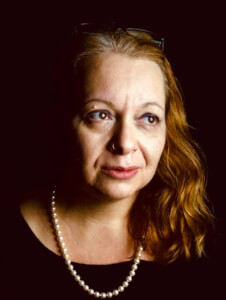The purpose of this paper is to discuss the use and many aspects of circles and mandalas both as geometrical shapes and metaphors found in art, education and therapy. Usually, a mandala is a geometrically arranged circular shape with various subsections and symbols. In eastern cultures, its purpose is to give the disciple the chance to mentally navigate its structure from the outer circle towards its centre. Circles are inscribed in our human nature, from the beginnings of ritual and primitive dances, from the moment of our conception and silent life in our mother’s round belly. It is an archetypal symbol.
In traditional shamanic practices, a circle was used during a methodically planned ritual to protect the shaman from the spirits as they exited the body of the person that was under psychic attack. In Buddhism practices, mandalas are used as a meditation tool. In modern and contemporary western society, rituals and magic have been largely replaced and modified into psychological and psychoanalytical approaches. Carl G. Jung, following his own internal explorations into the world of the subconscious, encouraged his patients to paint mandalas in an attempt to dive further into themselves in order to reach their centre.
Recent scientific research shows the impact of Mindfulness meditation and mandalas on education, predominantly, on special education. Various studies confirm that many brain networks are activated causing changes to its structure, thus affecting the academic performance and psychological well-being of the individual. Mindfulness meditation, springing from Buddhist tradition, can be defined as the process of becoming conscious of the present by focusing on and accepting all the different dimensions of experience. Mandalas as alternative therapeutic interventions create the conditions for an open discussion that will approach human nature holistically.
The rose, rosettes, rose windows will be the focus of this paper regarding sacred circles and art. In Plato's Timaeus, 32-35, we read that the most perfect of all shapes is the circle, so God gave this shape to the world. By name, the most circular flower is the rose (from Greek meaning round), also known as the flower of life. Macrocosmically, it symbolises the circular world, consisting of circular galaxies, circular solar systems, circular planets, as well as the cycle of life. It is a symbol full of historical significance and cultural references, often used in allegorical transports. Its ambiguous form (the purity of its petals as opposed to its thorns) embodies conflicting notions and interpretations. Its colour assigns it a different semantic content. It has been morphologically linked since ancient times with the themes of birth and rebirth, while the speed with which it withers is a symbol of death and how fragile life is. The rosette is a timeless jewelry, symbol and amulet. Rose windows are filled with theological and cosmological notions.
Art expresses the function of the soul, of our inner life and circles are beyond geometry since they speak an emblematic, archetypal, sacred language.
Back








